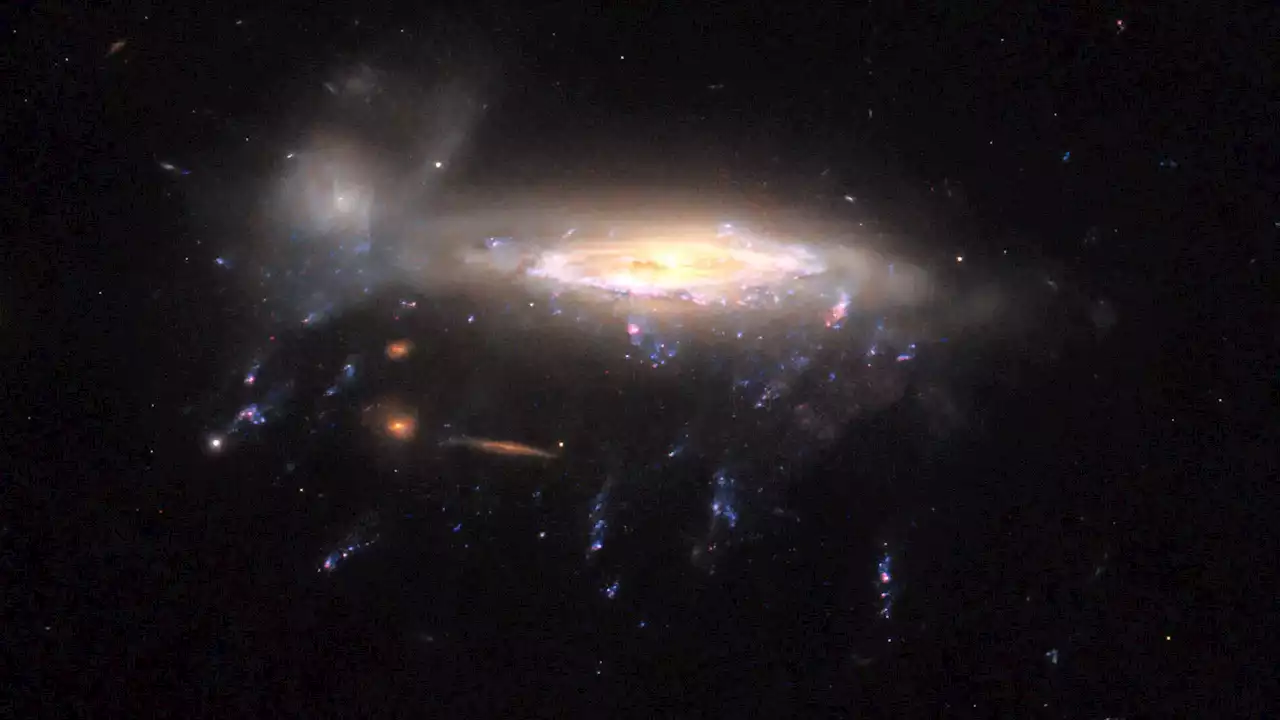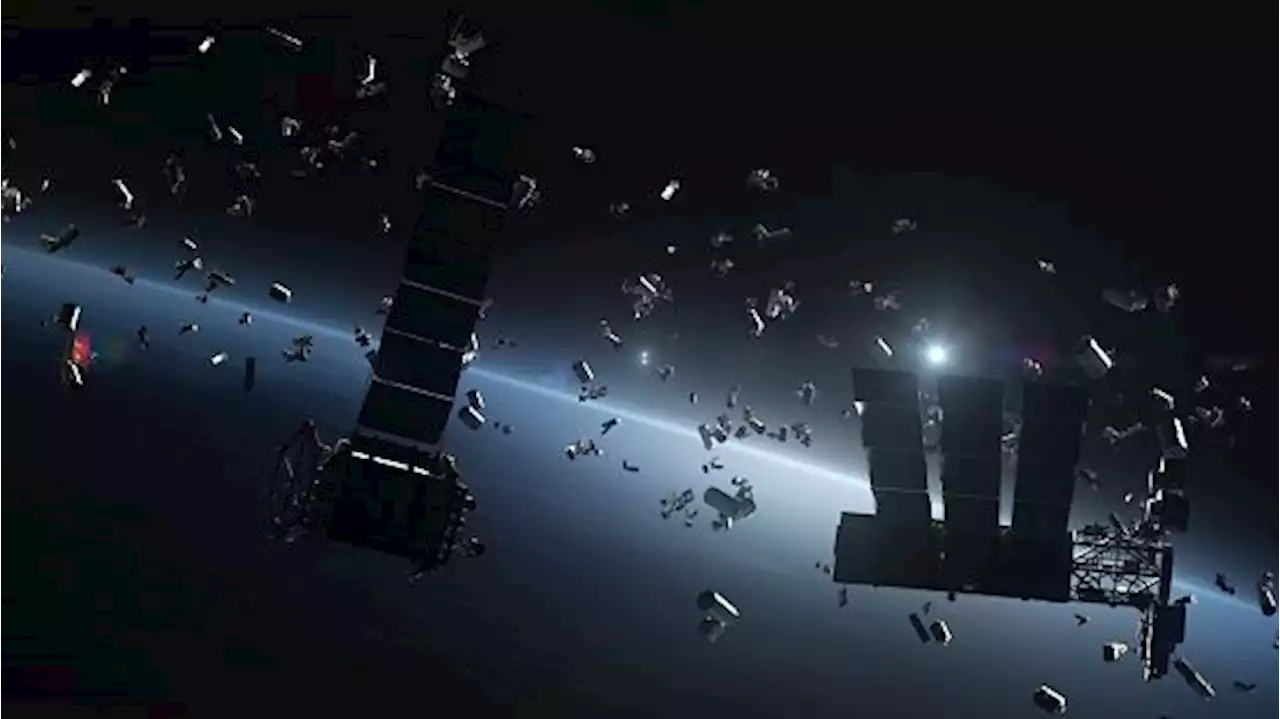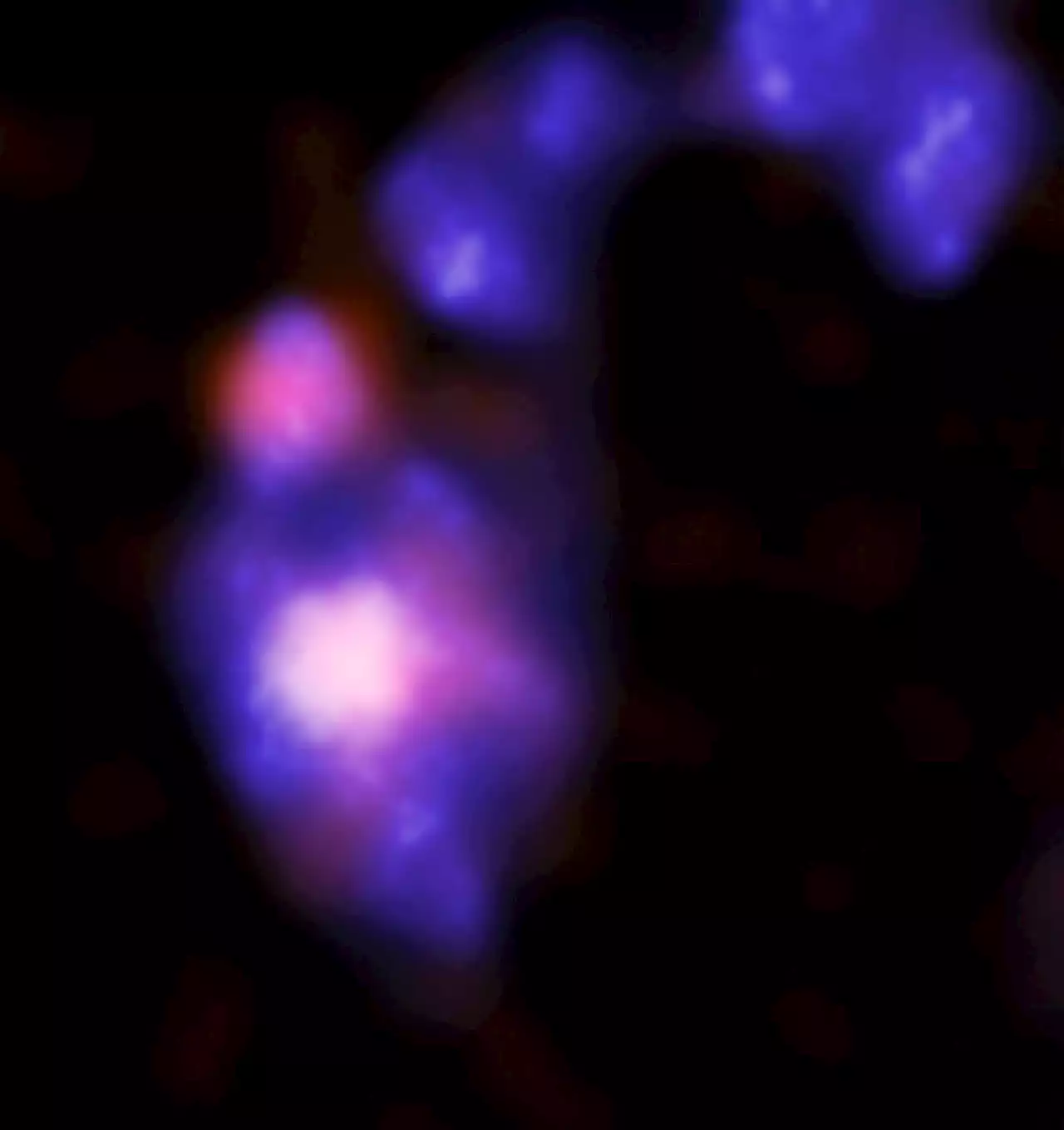Astronomers discovered the first evidence of giant black holes in colliding dwarf galaxies, offering important insights into early universe galaxy formation and black hole growth. The findings were made using NASA's Chandra X-ray Observatory, WISE, and CFHT data. Astronomers have discovered the f
Evidence for two pairs of supermassive black holes in dwarf galaxies on collision courses has been found with Chandra. The two pairs are shown in X-rays from Chandra and optical light from the Canada-France-Hawaii telescope. The merger on the left is in a late stage and was given the single name of Mirabilis. The other merger is in the early stages and the two dwarf galaxies are named Elstir and Vinteuil .
Scientists think the universe was awash with small galaxies, known as “dwarf galaxies,” several hundred million years after the big bang. Most merged with others in the crowded, smaller volume of the early universe, setting in motion the building of larger and larger galaxies now seen around the nearby universe.
X-ray and optical composite of Mirabilis. Credit: X-ray: NASA/CXC/Univ. of Alabama/M. Micic et al.; Optical: International Gemini Observatory/NOIRLab/NSF/AURA “We’ve identified the first two different pairs of black holes in colliding dwarf galaxies,” said co-author Olivia Holmes, also of the University of Alabama at Tuscaloosa. “Using these systems as analogs for ones in the early universe, we can drill down into questions about the first galaxies, their black holes, and star formation the collisions caused.”
The pair in Abell 133 appears to be in the late stages of a merger between the two dwarf galaxies, and shows a long tail caused by tidal effects from the collision. The authors of the new study have nicknamed it “Mirabilis” after an endangeredof hummingbird known for their exceptionally long tails. Only one name was chosen because the merger of two galaxies into one is almost complete.
United States Latest News, United States Headlines
Similar News:You can also read news stories similar to this one that we have collected from other news sources.
 Cosmic Tentacles: The Unexpected Star Factory in Jellyfish GalaxiesThe Hubble Space Telescope captured an image of JO204, a 'jellyfish galaxy' characterized by bright gas tendrils resembling jellyfish tentacles. These galaxies experience ram pressure stripping, which causes their loosely bound gas to collapse and form new stars in their tendrils. Here we see JO2
Cosmic Tentacles: The Unexpected Star Factory in Jellyfish GalaxiesThe Hubble Space Telescope captured an image of JO204, a 'jellyfish galaxy' characterized by bright gas tendrils resembling jellyfish tentacles. These galaxies experience ram pressure stripping, which causes their loosely bound gas to collapse and form new stars in their tendrils. Here we see JO2
Read more »
 The Big Bang’s Afterglow Reveals Invisible Cosmic Structures“The universe is really a shadow theater in which the galaxies are the protagonists, and the CMB is the backlight.” Via QuantaMagazine
The Big Bang’s Afterglow Reveals Invisible Cosmic Structures“The universe is really a shadow theater in which the galaxies are the protagonists, and the CMB is the backlight.” Via QuantaMagazine
Read more »
 Cosmic 'highway code' could help combat the space junk threatRobert Lea is a science journalist in the U.K. whose articles have been published in Physics World, New Scientist, Astronomy Magazine, All About Space, Newsweek and ZME Science. He also writes about science communication for Elsevier and the European Journal of Physics. Rob holds a bachelor of science degree in physics and astronomy from the U.K.’s Open University. Follow him on Twitter sciencef1rst.
Cosmic 'highway code' could help combat the space junk threatRobert Lea is a science journalist in the U.K. whose articles have been published in Physics World, New Scientist, Astronomy Magazine, All About Space, Newsweek and ZME Science. He also writes about science communication for Elsevier and the European Journal of Physics. Rob holds a bachelor of science degree in physics and astronomy from the U.K.’s Open University. Follow him on Twitter sciencef1rst.
Read more »
 The Nancy Grace Roman Space Telescope will 'rewind' the universe. Here's howThe powerful space telescope will take a vastly wider look at the universe than Hubble or the James Webb Space Telescope, potentially helping to unravel pressing cosmic mysteries.
The Nancy Grace Roman Space Telescope will 'rewind' the universe. Here's howThe powerful space telescope will take a vastly wider look at the universe than Hubble or the James Webb Space Telescope, potentially helping to unravel pressing cosmic mysteries.
Read more »
